Sometimes we discover some fascinating stories whilst we are researching our family history and sometimes the stories find us. Now ordinarily you might wonder what my connection is to the story of an American Fighter Pilot who tragically died in WW2. So let me tell you about Arthur Leslie Brown and how his story found me……..
Around two years ago I moved to the wonderful historic town of Nantwich in Cheshire. Nantwich is absolutely steeped in history, full of historic buildings, each with their own unique story to tell. There are over 132 listed buildings within the boundaries of the town, which makes it a house history researcher’s dream! There are also plenty of books about the history of Nantwich and the buildings within the town and for a history lover like myself, it’s an Aladdin’s cave. Maybe we can explore more of the History of Nantwich in a later blog.
So what is Arthur Leslie Brown’s connection with Nantwich? Recently I discovered a memorial to an American Airline Pilot tucked away, behind Shrewbridge Road in Nantwich. There I found a memorial and plaque to commemorate his heroism. The memorial from The Royal British Legion states;
“On the 14th January 1944, 1st Lt Arthur Brown of the United States Army Air Force was flying in a Thunderbolt P47D Plane, he crashed near to the River Weaver behind Shrewbridge Road in Nantwich. Unfortunately, his body has never been found.”


How could I refuse an opportunity to research and tell his heroic story? Some of the story surrounding the air crash has been published online, but I wanted to go beyond the records themselves and tell the real story about who this heroic pilot was and where he came from.
Arthur Leslie Brown was born on 4 November 1919 in New York, the oldest of two children born to Richard Parks Brown and Nettie Elizabeth Brown nee Leslie, who were married on 6 March 1924 in Smithtown Branch New York. The 1925 census shows the family living at Commack Road, Smithtown Suffolk County, New York, Arthur’s father Richard is recorded as a chauffeur. Smithtown is a town in Suffolk County New York on the shore of Long Island and forms part of the wider New York Metropolitan area.

(1925 Census)

(Richard Parks Brown)
The 1930 census saw the family move to Freeport, a village in the town of Hempstead, in Nassau County on the South Coast of Long Island and this area was seen as typical ‘commuter belt’, for families wanting quick access to New York City. The family home was 16, Hampton Place, Freeport Village, Nassau, New York. Again Arthur’s father is recorded as a chauffeur. During the early 1900’s, the term chauffeur was flexible and could mean a wealthy automobile enthusiast, a privately employed driver-mechanic, commercially employed delivery or taxi driver or anyone who drove an automobile whether for hire or pleasure. By the mid-1910’s, the meaning settled onto paid driver-mechanic or merely, paid driver. The 1920 census showed just over 285,000 chauffeurs employed throughout the country with the majority in major east coast cities such as New York, Philadelphia and Boston. As the technology and engineering improved in automobiles, so did the duties of the chauffeur. Vehicle maintenance was being outsourced to service stations and garages and the chauffeur began concentrating more on what mattered most, looking after his employer.

(1930 Census)
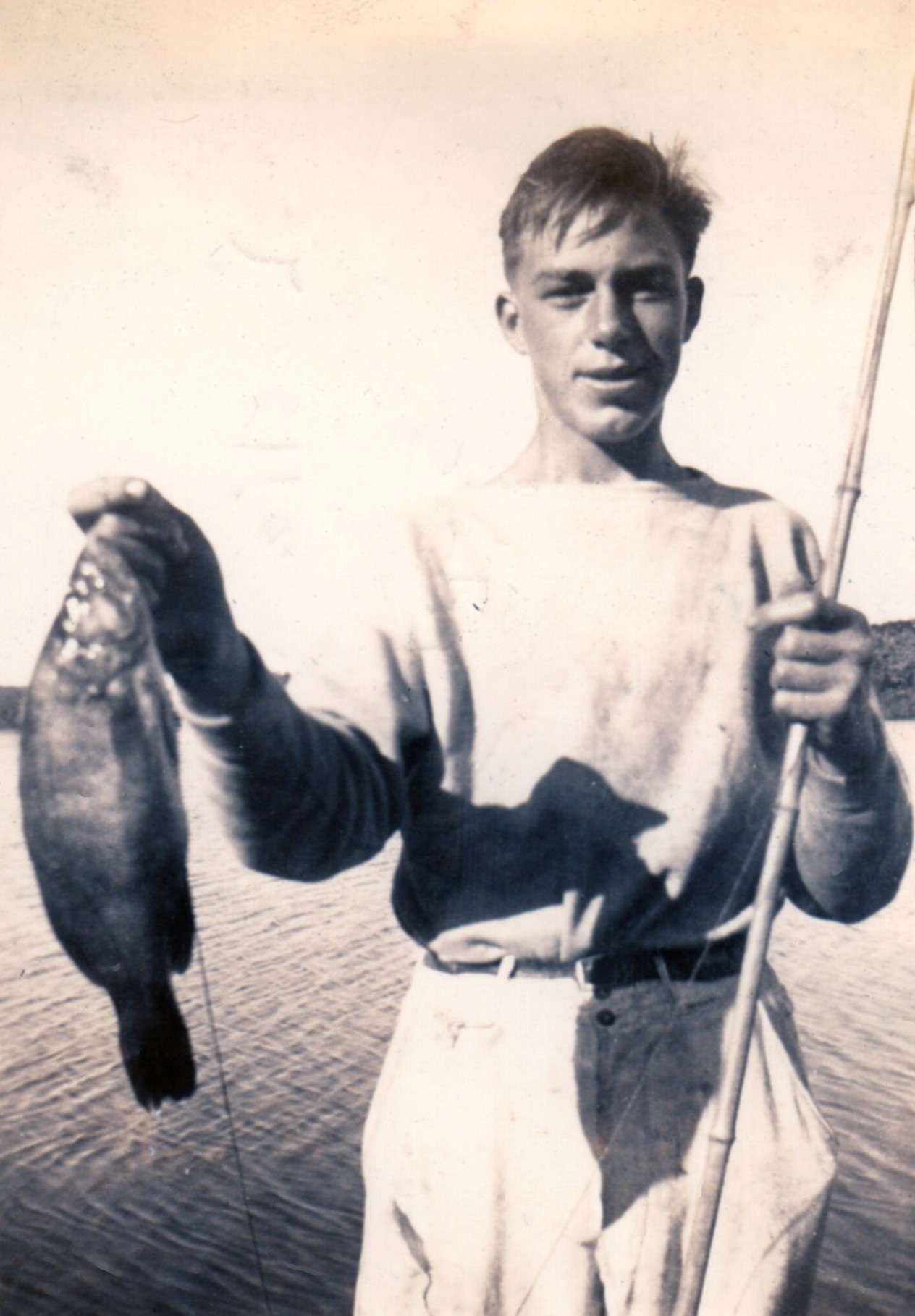 (A Young Arthur Brown)
(A Young Arthur Brown)
By the time the 1940 census was taken, Arthur himself was making his way out into the big world, he was employed as a Hospital Attendant and his father was recorded as a house painter. The family home was 161 Brookside Avenue, Freeport, Nassau, New York. Within a year of the census, Arthur was drafted into the American Air Force from Long Island, New York. His enlistment date was 1 July 1941. At the time, the family home was 167 Randall Avenue, Freeport Haas, New York. He lists his mother, Nettie Brown as his next of kin, at the same address. At the time Arthur was listed as being employed by Viebrocks on South Main Street, Freeport. This was the favourite downtown hangout, on Main Street, Freeport Village, long before there was an Arnold’s Diner in Happy Days.

(1940 Census)

(Arthur’s Draft Card)

(Viebrock’s Diner)
Once the Americans had entered the Second World War, increasingly we saw a larger presence of American pilots based here in England. At the time of his accident, young Arthur, at the tender age of just 23, had risen to the rank of 1st Lieutenant of 495th Fighter Group, Service Number O-886150.
On the day of the tragic accident, Arthur had taken off from Armed Air Forces Station F-342, near Shrewsbury in Shropshire. The base was initially built for RAF Fighter Command, during the Second World War, but its primary use was by the United States Army Air Force. It was the home of the 495th Fighter Training Group, of which Arthur was a 1st Lieutenant. The pilots were trained to fly in the main, Republic P-47 Thunderbolts and the 495th Fighter group were based here in Shropshire from 27 August 1942 until February 1945.
Historical weather data from the date of the crash show that there was a large anticyclone over the English Channel, which was still developing on the day and projected to move slowly east. A deep depression off South East Greenland was also moving North East and there was a South Westerly gale and slight rain near the North West coasts, but fair weather over most of the British Isles. Overnight fog was predicted over many places. In the South, it would have been mainly mild, but ground frost was expected over most of England and Wales. The outlook was considered fair, but considerable fog was expected. Was the weather on the day a potential factor?
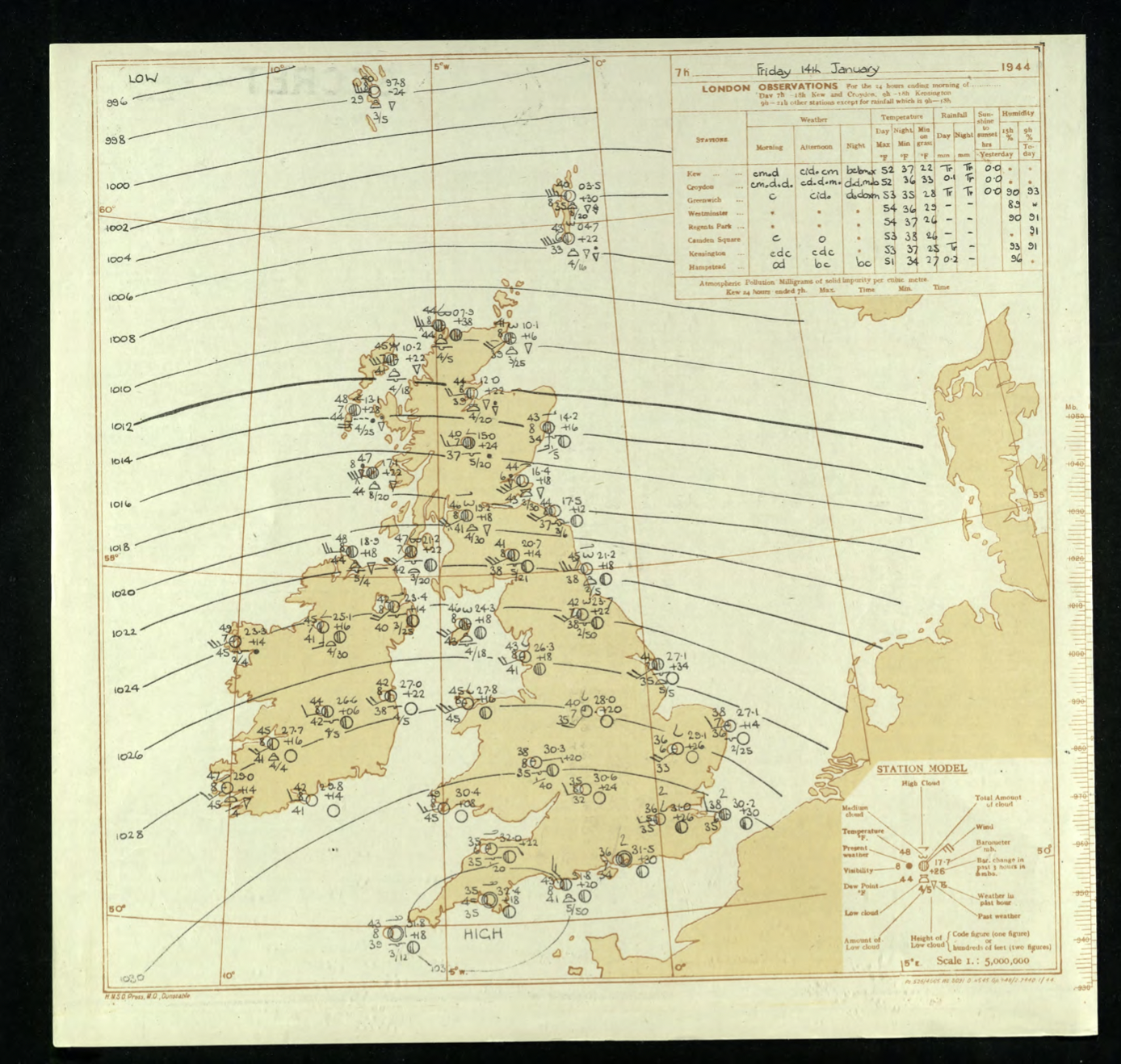
(Historical Weather Data from 14th January 1944)
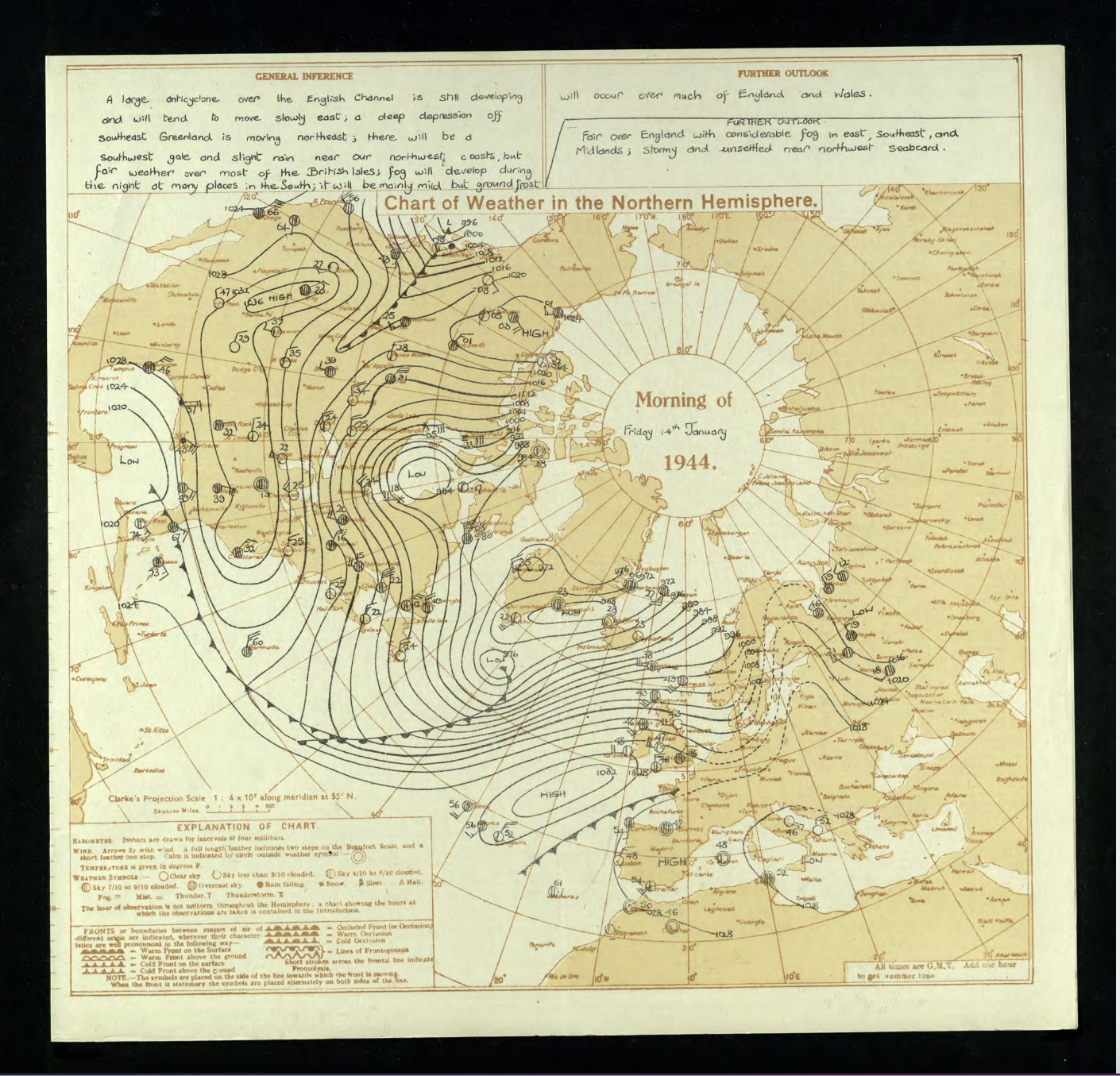
(Historical Weather Data from 14th January 1944)
The P47 was the largest single-engine fighter aircraft of World War Two weighing in at over nine tons when fully loaded; three times the weight of a Spitfire. The range which the P47 offered, enabled the American daylight bombing offensive, to have fighter protection all the way to Germany and back. However, the nature and date of this training flight would suggest that Brown was in training for D-Day which would follow some five months later.
Arthur’s mission on that fateful day was a high-altitude training flight and at 14:00 on the 14 January 1944, two flights of P-47s left the American Air Force base near Shrewsbury with an instructor as flight leader. Arthur’s plane bore the serial number 42-7925. They climbed to between 22 and 24,000ft where the formation carried out a series of cross-over turns, which took place over the town of Nantwich in Cheshire. After completing the turns the flight leader was aware that he could only see two of the three aircraft in the other section. The flight leader, Captain Potter, attempted to contact Lt. Brown by radio as did the ground controller, but neither was able to make contact. During the crossover turn, Staff Sergeant Decker, who was in the formation above Brown’s, observed Brown’s aircraft as it broke away from the formation and was seen to make several sharp turns, climbs, and dives. Next time Decker glanced back he noted only two aircraft in the Purple section.
Lieutenant Brown’s aircraft impacted the soft ground at high speed at approximately 14:10. Witnesses reported a loud bang upon impact but no fire was seen thereafter and the aircraft quickly sank into the ground leaving little for RAF salvage teams, who arrived shortly after the accident. Unfortunately due to the soft ground and the speed of the impact itself, any recovery proved futile and Lieutenant Brown’s body remained with his plane. Among the small amount of wreckage found at the scene was a valve rocker arm from the plane’s engine. Harold Forster, then living in Station View, kept the item and it remained in Mr Forster’s family until 2012 when it was sold at auction.
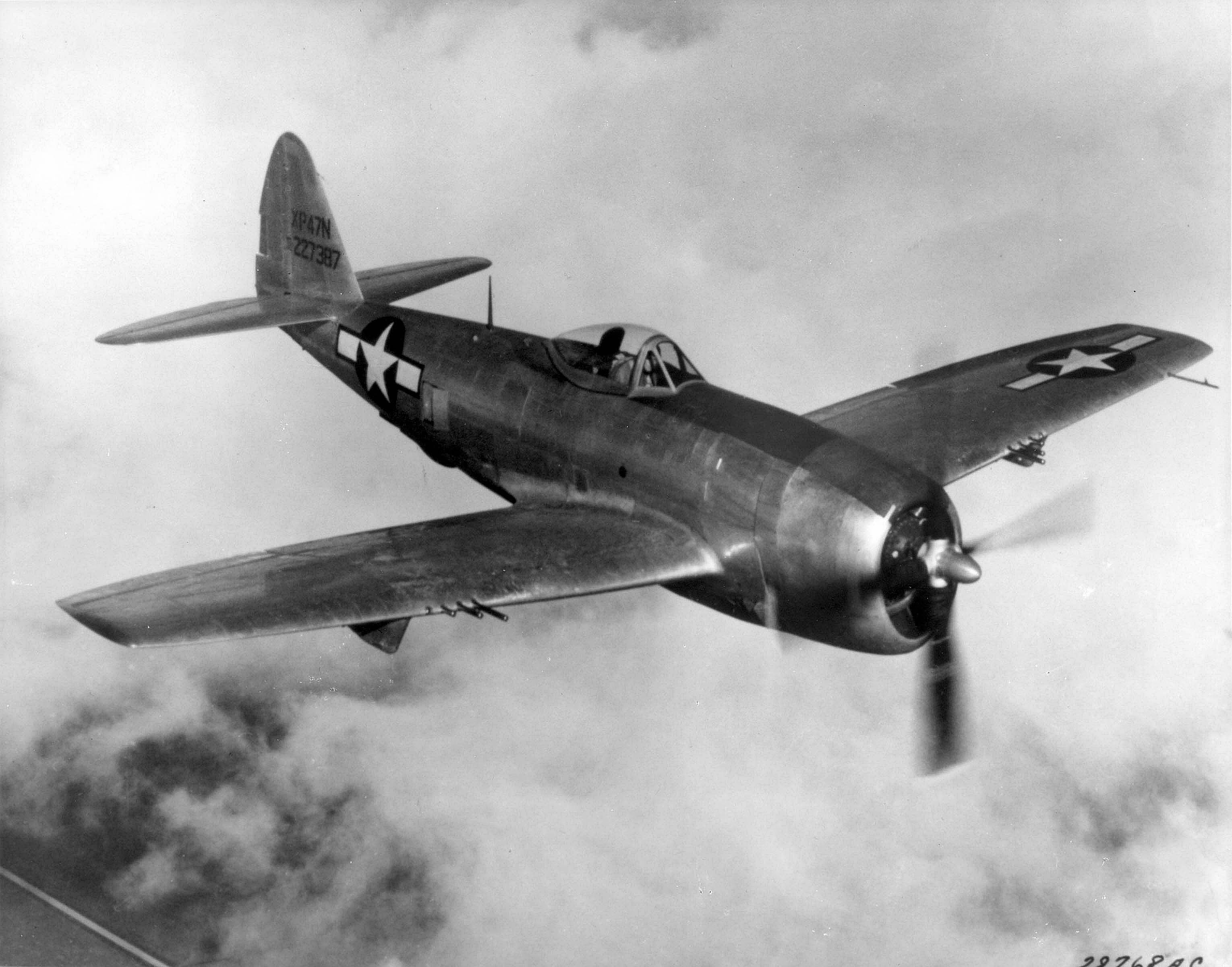
(Republic P-47 Thunderbolt similar to the plane Arthur flew on that fateful day)
Initial thoughts as to the cause of the accident were unclear and it was thought that Lieutenant Brown had made a heroic effort to ditch his plane away from the main town itself, possibly saving the lives of many civilians. However, the official investigation conclusion from the USAAF stated that Lieutenant Brown suffered from anoxia, which is insufficient oxygen in the body tissues, as a result of a failure in his breathing apparatus. It was always said that he died a hero flying his plane away from the town to avoid buildings. However, the new information suggested that it was a lack of Oxygen that might have caused him to black out and the crash site was a matter of luck. But he still remains a hero in the town of Nantwich today, as he was “over here” helping Britain with the war effort.
Mr Philip George, the farmer on whose land the stricken Thunderbolt crashed, felt nothing was being done about marking the spot and so felt he had an “obligation” to provide “some sort of memorial”. This was revealed in a letter to the pilot’s mother. He wrote:
Dear Mrs Brown,
I expect you will have heard, some time ago, from the USA Air Force of the sad news of your son. I am writing to offer you my greatest sympathy and to say the plane crashed into my field in Shrewbridge Road, Nantwich, on January 14, 1944. The Air Force men tried for some days to get it out but it had gone in so deep that they found this was impossible. As I understand, nothing was being done about it and as the owner of the land I felt, out of respect to the pilot, it was an obligation for me to mark the spot with some sort of memorial and I know you will be interested to hear I have now fixed on the spot a very permanent stone slab of which I enclose a rough sketch. It is in a very nice little field, on high ground, along the bottom of which the River Weaver winds and twists. I have not had the hole in the field entirely filled up but have made it into a sort of dell or dingle and have seeded it with wild white clover so that it will bloom in the summertime. I thought this would be more in keeping than making the ground all level. As soon as I get the place green over, I will have some photographs taken and send them on to you. I may say I know exactly how keenly you will feel the loss of your son because my family lost a lad (Spitfire pilot) in the Battle of Britain which brings it home to me and makes a strong fellow feeling.
My wife joins me in sending our kindest regards and deepest sympathy.
Yours very faithfully,
P. N. George

(The letter sent to 1st Lt Brown’s mother in May 1944 by the farmer on whose land the plane crashed)

(Mr George’s sketch of the first version of 1st Lt Brown’s memorial stone)
In one of those cruel twists of fate, it was later discovered that the pilot’s mother, Mrs Nettie Brown, was employed in an aircraft production factory near Freeport, New York, where the family lived and worked on the Thunderbolt aircraft which was later to be her son’s final resting place.
A memorial was erected on the crash site which was attended and cared for over many years by the local Guides and Brownies and relatives of Lieutenant Brown’s have been over to visit the site and meet with local residents. The association between the Brownies of Nantwich and Mr and Mrs Brown has been a long standing one and has been reported in the local newspaper many times.
Mrs G. Hollowood, Brown Owl of the 4th Nantwich Brownie Pack (Methodists) received a letter from Mrs Nettie Brown of Oklahoma, containing a Christmas donation to the Pack. The gift is a further acknowledgement by Mrs Brown of the kindness of the Brownies in taking flowers to the grave at Nantwich of her son, Pilot Officer Arthur Leslie Brown of the American Air Force.
Two local ladies in particular have been attending the brave American Airline Pilot’s Grave for over 50 years;
A war hero’s grave will never be without flowers thanks to the efforts of two Nantwich women for over 50 years. Mrs Gladys Henshall and Mrs Margaret Brown have visited the memorial to the brave American airman, Lieutenant Arthur Leslie Brown hundred of times through the decades. Now aged 78 Mrs Henshall said “I was with the Hospital Street brownie pack at the time and we were all deeply touched by the tragic death of the brave young man. We sent a letter to his family in America and they have kept in touch with me ever since. I take my own flowers on the first Sunday of each month and Margaret will go in between times. In our minds, he will never be forgotten.”
The memorial site is now cared for by the Nantwich branch of the Cheshire Regiment Association. Originally there was a memorial service held each year on Remembrance Sunday but a spokesman for the Nantwich & District Branch of the Royal British Legion said: “This service had previously been held on Remembrance Sunday, but of late, it was felt Lt Arthur Brown’s remembrance deserved to be honoured on a day closer to his death. So, the second Sunday in January will now mark the sacrifice he made, by guiding his stricken aircraft away from a populated area of Nantwich.”

(Wreaths were laid by Nantwich & District Branch of the Royal British Legion, Royal Air Forces Association, 100 (Nantwich) Squadron Royal Air Force Air Cadets, and Nantwich Town Council.)
The inscription on the memorial reads:
HERE LIES 1ST LIEUTENANT
ARTHUR L. BROWN
USAAF
AGED 23 YEARS
OF NEW YORK
WHO CRASHED
IN HIS THUNDERBOLT
TO AVOID THIS TOWN
JAN 14TH 1944
WITH SYMPATHY AND RESPECT
In memory of Lieutenant Brown and his heroism, Nantwich and its people paid tribute to the American Pilot by naming a road after the American Airline Pilot.
In the sunshine of a typically English summer evening, Nantwich paid its official tribute to an American Airman who, 25 years ago, gave his life to avert a major disaster in the town.
The Stars and Stripes were removed by an American Air Force major to unveil a nameplate “Brown Avenue” on a new road on the Parkfields Estate, in memory of U.S. Army Air Force 1st Lieutenant Arthur Leslie Brown. Lieutenant Brown stayed at the controls to pilot his Thunderbolt fighter away from the town centre until it crashed and buried itself in a field off Shrewbridge Road in January 1944.
The ceremony was the culmination of a transatlantic relationship which has been built up since 1944 between Lieutenant Brown’s family and Nantwich. The airman’s parents Mr. Richard Brown aged 67 and his 68-year-old wife, Nettie, were visiting England from their home near New York and were there at the ceremony. Mrs Dorothy Maus and their grandchildren, eight-year-old Christopher Maus and 14-year-old Melissa. Melissa and a fellow-American Girl Scout, 15-year-old Linda Kees, in their uniforms, formed a guard of honour on either side of the nameplate during the ceremony. It was an appropriate touch because it was through the guide movement – and in particular the brownies of the Methodist Pack at Nantwich – that the now strong association between the brown family and Nantwich has developed.
One of the guests of the Council Chairman, Mr. J. Blagg at the civic reception and road naming was Mrs Gladys Hollowood, former brownie leader, who started the custom, still continued by the Brownies, of placing flowers every month, on the airman’s grave. Mrs Hollowood is now a close friend of Mr and Mrs Brown.
Former Brownies who have tended the grave over the years walked in procession from Brookfield House to Brown Avenue, together with members of the present Brownie pack. Before the road naming Mr. Blagg said “We all mourn this young man’s death. He died as many thousands of others did during the war, showing courage and self-sacrifice for the cause of freedom. We do feel, however, that through him the people of Nantwich have an opportunity of expressing admiration and continuing affection to the people of America, who fought with us as firmly as allies during the war. I formally dedicate this road to the memory of our dear friend 1st Lieutenant Brown and trust that the respect we have for him will last as long as the town exists.”
Major Thomas Handley, representing the American Ambassador and the Commander of the U.S. Third Air Force Headquarters, South Ruislip, unveiled the nameplate. Also representing the American Forces was Master Sergeant Reuben Willis. Major Handley said they were remembering an act of bravery and in military parlance, which citations were written, they said that such an act reflected great credit on the man himself and on the United States Air Force, Lieutenant Brown had done that, and his action also reflected great credit on the family who had raised him. The road-naming ceremony reflected great credit on the Council and the town of Nantwich and on the English people as a whole.
A dedicatory prayer was offered by the Rev. J.H. Winn Haswell, a retired RAF Chaplain and former Methodist minister at Nantwich, who is now living in Exmouth. The ceremony ended with “Pappy” Brown expressing thanks the the people of Nantwich – “all you lovely people” – and in particular to the Brownies.
The American airman’s grave, in a field of Shrewbridge Road, was made by a Nantwich businessman, the late P. H. George, on whose land the fighter crashed. His own son, Leslie, an RAF pilot was killed in the battle of Britain. Mr. George bequeathed the land on which the grave stands to the Urban Council, on condition that they maintained it. The councillor who, last year, suggested the road-naming was Mr. Harry Carson who was among the U.D.C members and wives who attended the ceremony.

While the grave tended by Nantwich people is close to the crash site, the “official point of commemoration” is at the Cambridge American Cemetery. His memorial headstone is located at Plot A, Row 4, Grave 36. The photographs below were taken by Geoffrey Gillon.

(Arthur Leslie Brown’s Headstone Cambridge American Cemetery)
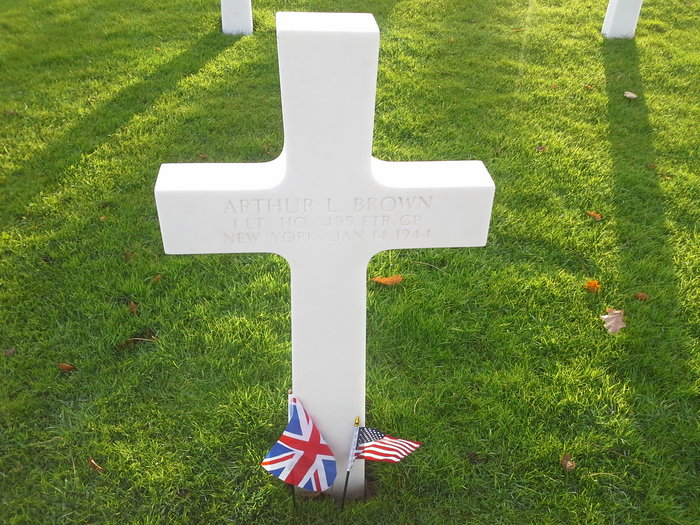
(Arthur Leslie Brown’s Headstone Cambridge American Cemetery)
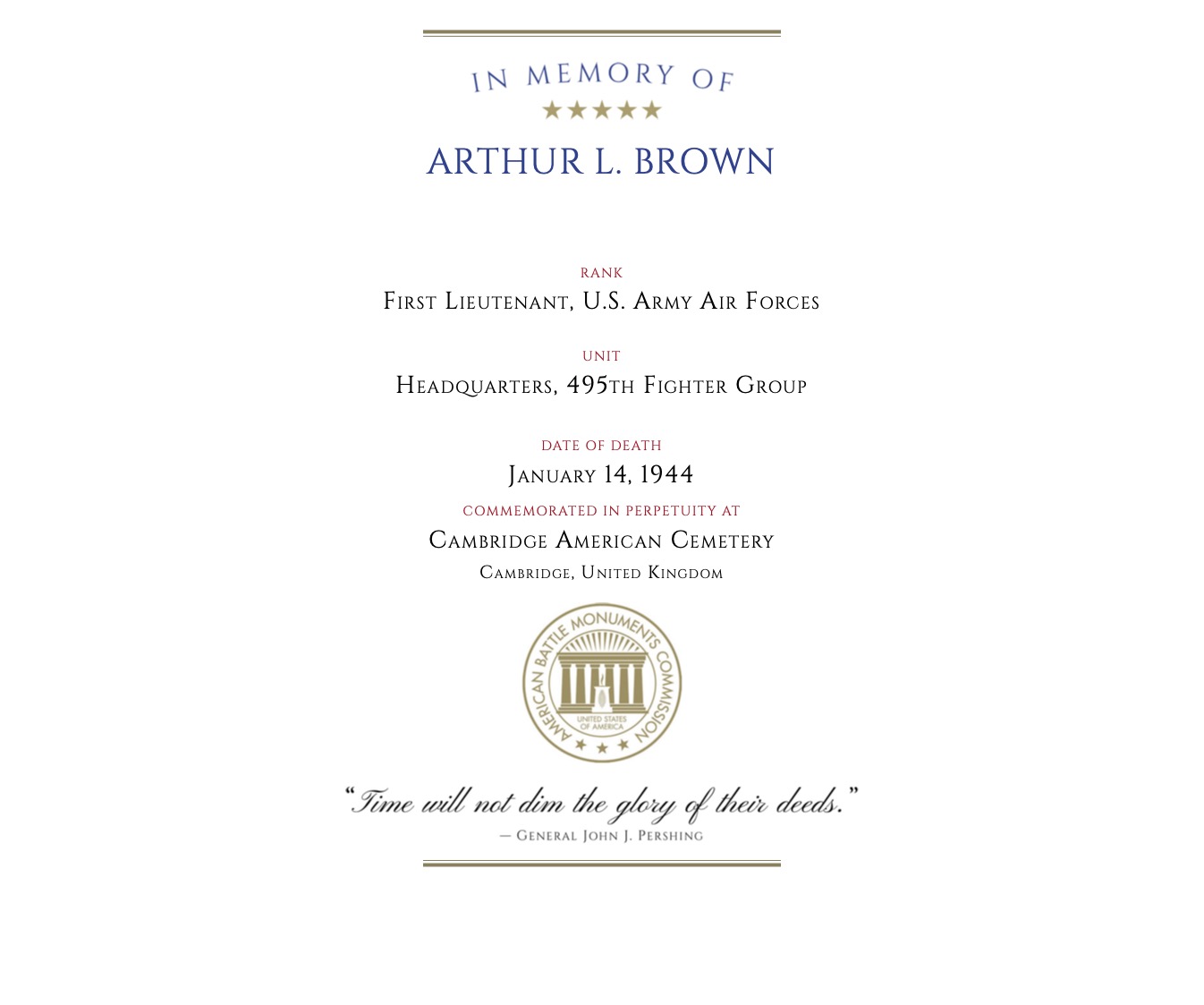
(American Battle Monuments Commission Certificate)

(Nantwich Hero – 1st Lieutenant Arthur Leslie Brown)
So many lives were changed forever on the fateful January day in 1944. A young American Pilot whose life was cut tragically short due to the war. A man now forever in the hearts of the Nantwich people and whose sacrifice will be forever remembered.
As a postscript to the story, on the 80th Anniversary of Lieutenant Arthur Leslie Brown’s tragic death, on Sunday 14th January 2024, the people of Nantwich held a commemorative service in St. Mary’s Church whereby for the first time in the History of Nantwich town, Lieutenant Arthur Leslie Brown was posthumously afforded the ‘freedom of the town’ from the local town council. The family of Lieutenant Brown were in attendance to accept this award on his behalf. Following the Church Service and presentation service, a parade was held to the burial site on Shrewbridge Road where a service was held in his memory. I attended both the Church Service and the graveside memorial service and have included some pictures below.
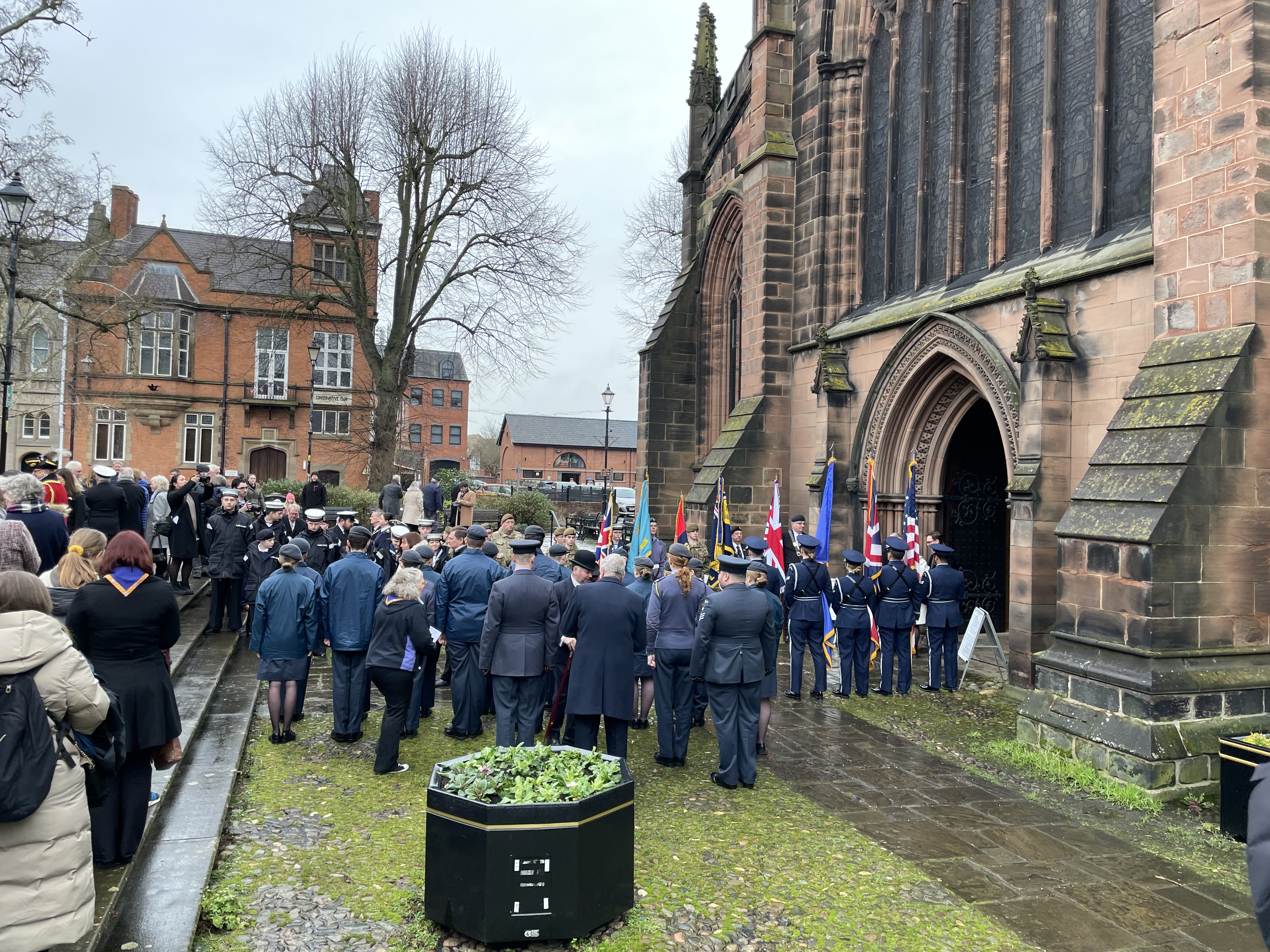
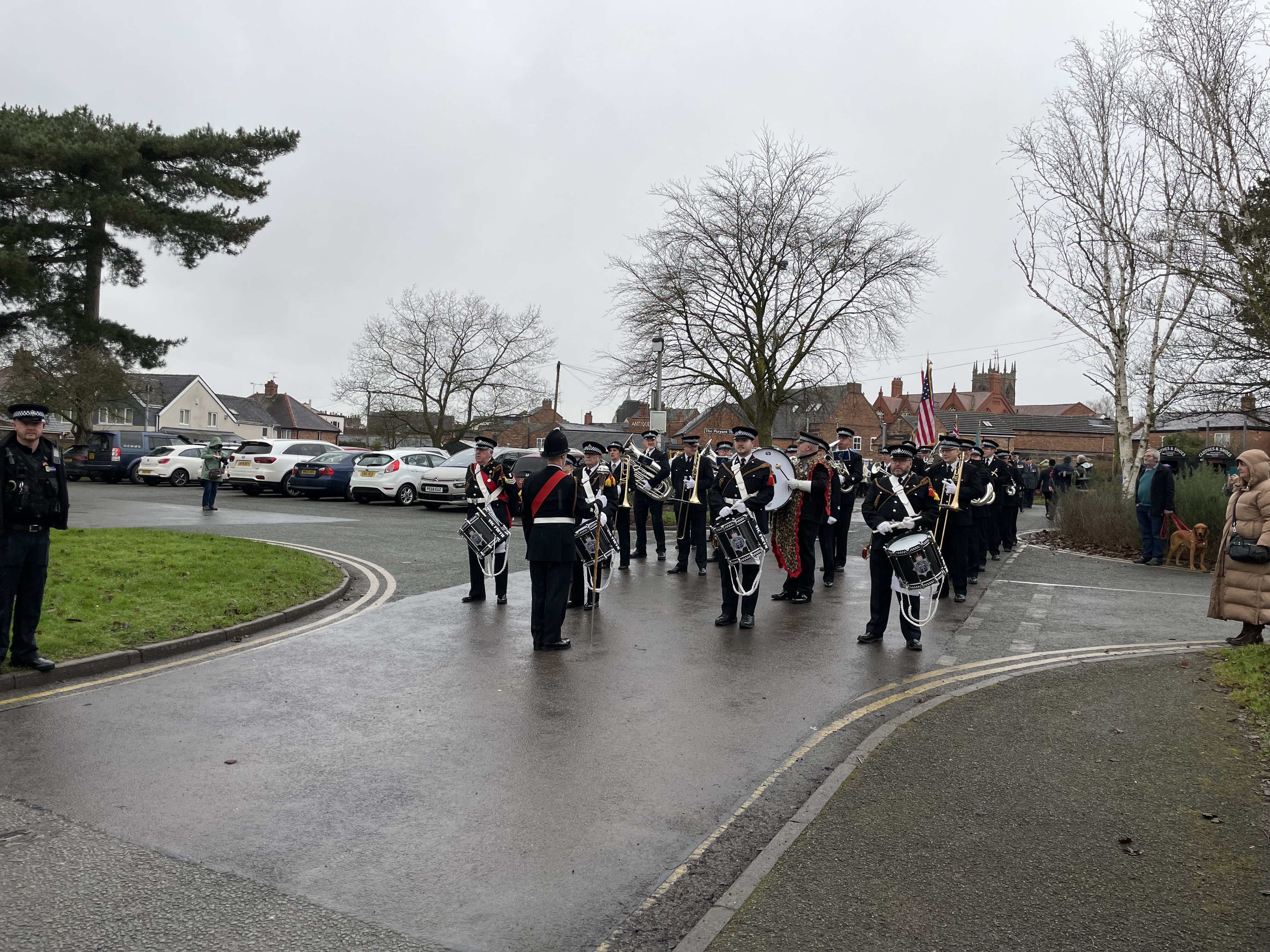

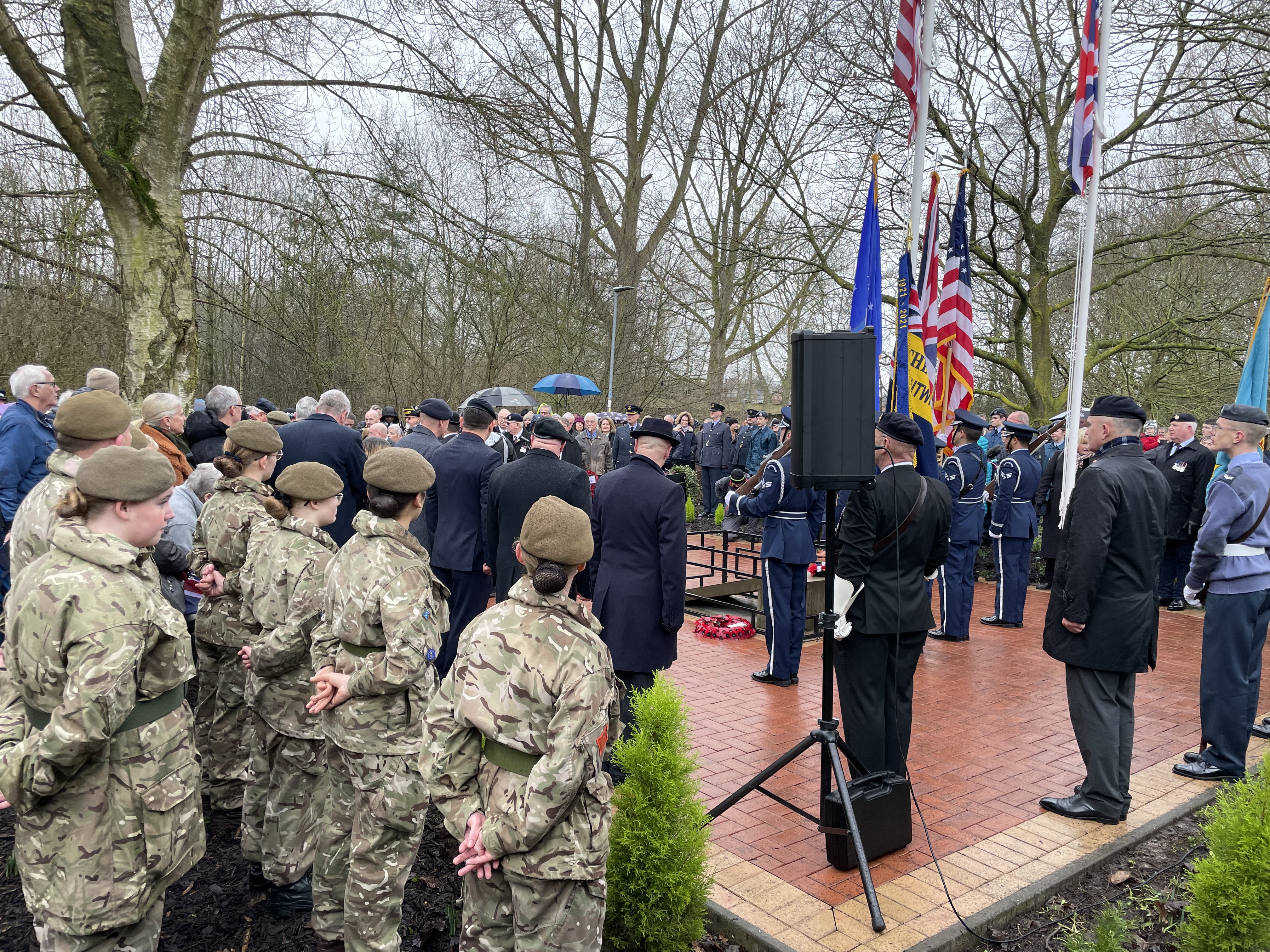
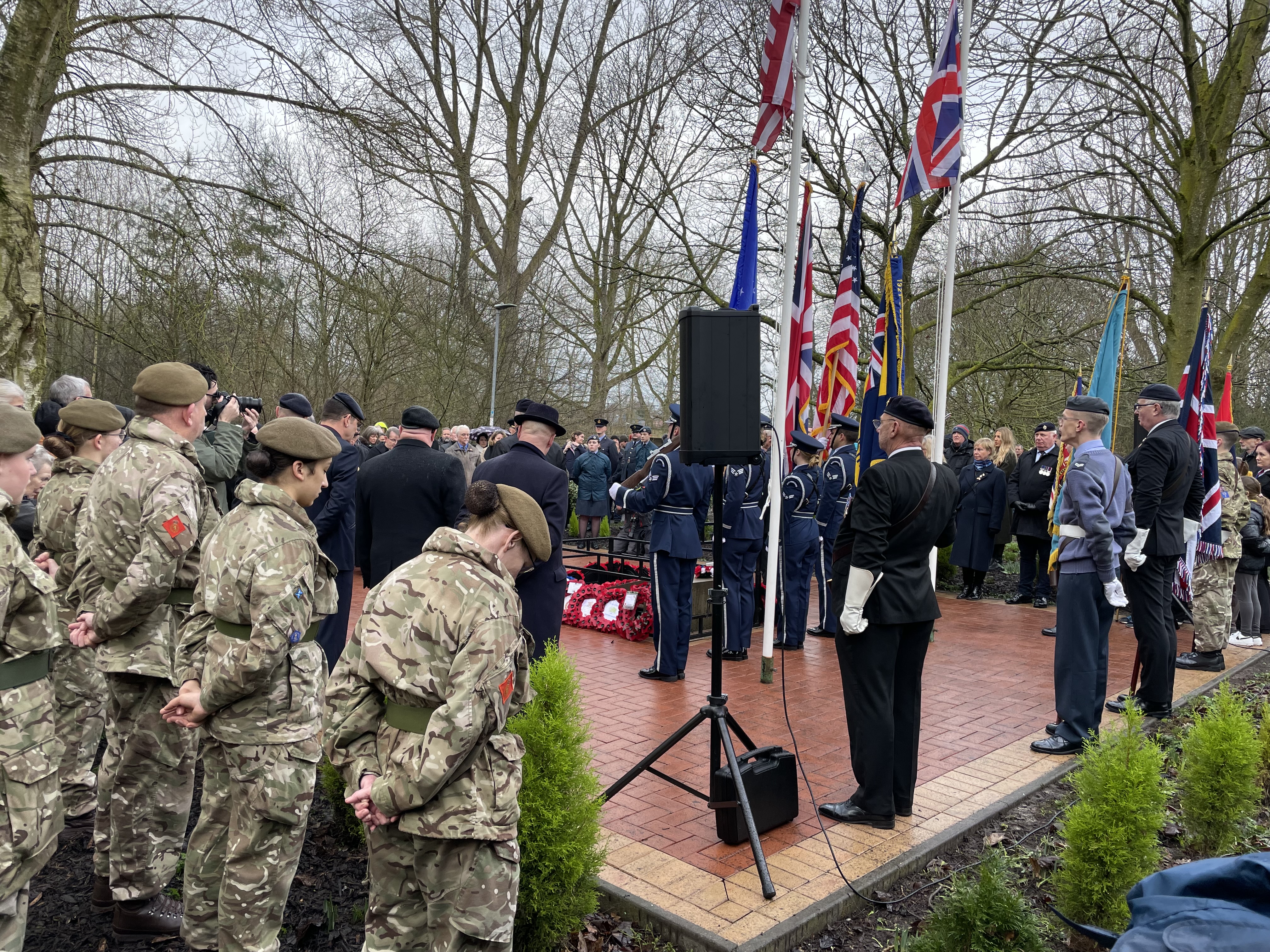
Special thanks to John Brough and Andrew Lamberton from the website A Dabber’s Nantwich for allowing me to use some of their material in this blog.
Why not visit my new website:
All My Blogs For Family Tree Magazine in one handy place
Copyright © 2023 Paul Chiddicks | All rights reserved


What an amazing story! You clearly enjoy a spot of sleuthing.
LikeLiked by 1 person
Thanks Sheree, I cant resist the draw of a good story!!
LikeLiked by 1 person
Thank goodness
LikeLike
An excellent collection!
LikeLiked by 1 person
Thank you 😊
LikeLiked by 1 person
Paul, what a wonderful story about this young U.S. Army pilot, his final resting place, and the lovely people of the historic town of Nantwich who have taken the time and effort to remember him. Your efforts to remember him “more” are to be commended.
LikeLiked by 1 person
Thank you so much for your kind words Lynn, I think it’s so important that we all “do our bit”, to remember the brave sacrifice these young men and women gave to ensure that we have the freedom that we have today
LikeLiked by 1 person
what a wonderful story of such a brave young man. it’s always so interesting when we go deeper into someone’s story and thanks for always sharing these
LikeLiked by 1 person
Thank you so much Beth, I think it’s so important that we keep their memories alive so that the next generation can appreciate the sacrifices they made
LikeLiked by 1 person
absolutely
LikeLike
A very thorough accounting for young Lt. Brown. You’ve found some excellent material to bring it all “to life.”
LikeLiked by 1 person
Thanks Eilene much appreciated
LikeLiked by 1 person
Thank you for bringing this story back into the spotlight…so many young men died because one madman/egomaniac somehow gained power. How ironic that Mr. Brown’s son was a pilot who lost his life as well. Lest we forget…
LikeLiked by 1 person
Thanks Teresa for your kind words, it’s so important that we all do our bit in keeping the memories of these brave men and women alive
LikeLiked by 1 person
Thank you for telling this story. I really enjoy seeing the old photos and records.
LikeLiked by 1 person
Thanks Rick much appreciated 😊
LikeLiked by 1 person
An excellently researched telling of this tragic event. I had basic understanding of what happened but this really brought it to life and shows just how dangerous even training missions were in those days.
LikeLiked by 1 person
Thank you Ian appreciate your thoughts I will be attending the commemorative ceremony to mark the 80th anniversary in our local church tomorrow
LikeLike
Hi I have been to the memorial today in Nantwich and thought I would a bit more research and found your article which is well written. One question, you mentioned that current thinking is he blacked out due to lack of oxygen/faulty mask, but his body was never found so how would they know. Thanks
LikeLiked by 1 person
Thanks Paul, I attended the memorial service myself today it was a very fitting tribute and nice to see his family over here as well. The new information came from a university student in conjunction with an aircraft crash investigation expert who have come up with this new theory based on the very erratic flight pattern prior to the crash. Of course we will never know for sure either way. I will be adding some pictures and video from todays ceremony in due course
LikeLike
Thanks for the response. I have thought would a plane in distress be able to be piloted to a safe spot. It would be nice to think he did have some control, but as you say we will never be sure. Look forward to seeing you photos of today.
LikeLiked by 1 person
Hi Paul I have added some photos from the memorial service now
LikeLike